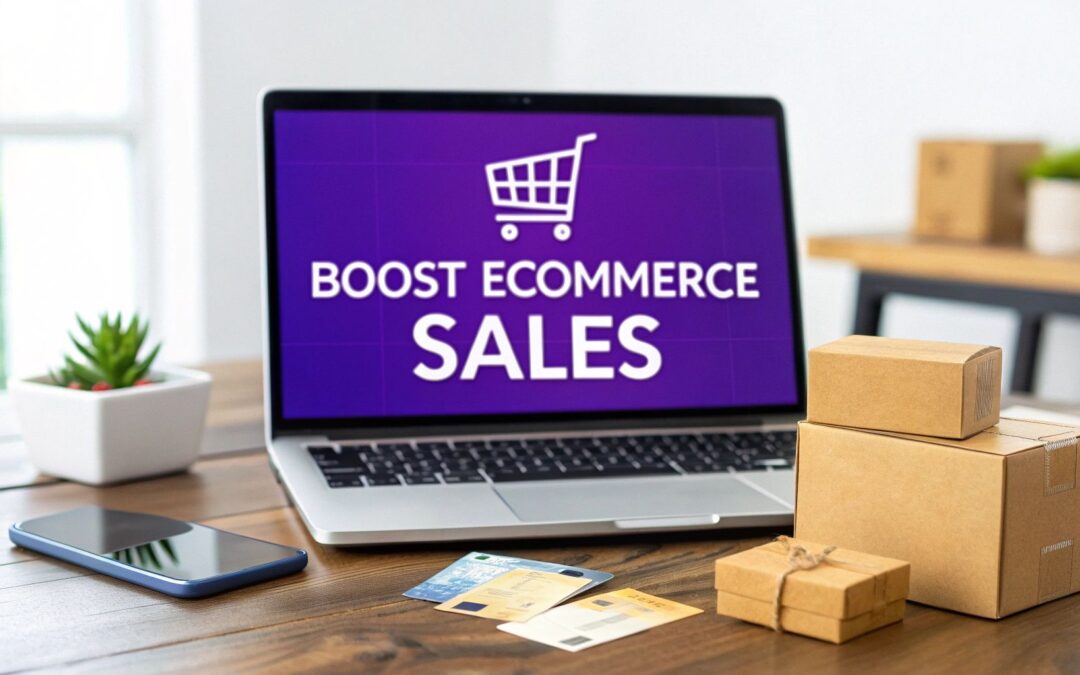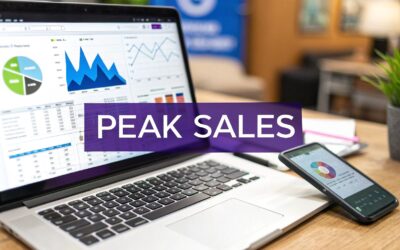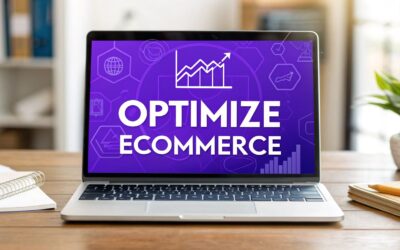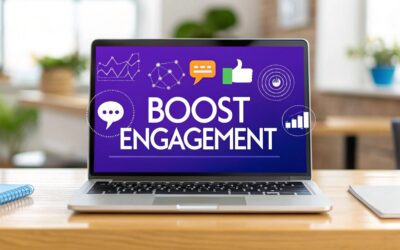Trying to increase your ecommerce sales can feel like you're trying to solve a puzzle with a million moving pieces. But when you boil it down, it really comes down to a focused strategy built on four core pillars: creating a fantastic user experience, personalizing the customer journey, running smart marketing campaigns, and making the checkout process as painless as possible.
This isn't about finding one magic trick. It's about taking a holistic approach that turns casual browsers into loyal, repeat customers.
Your Blueprint for Driving More Online Sales
Before you start tweaking product pages or launching a new ad campaign, you need a clear roadmap. The most effective way to grow your online store is to understand how all these different elements work together. To get started on the right foot, it’s a good idea to define your overall ecommerce growth strategy first, which helps ensure every ounce of effort aligns with your big-picture business goals.
Think of this as your high-level game plan. It sets the stage for all the detailed, actionable advice that follows and gives you the "why" behind every tactic, from simplifying your site's navigation to crafting an email sequence that actually converts. The ultimate goal here is to create a seamless path from the moment someone discovers your brand to the moment they click "buy."
Understanding the Core Growth Levers
The explosion in online shopping over the last few years has created a massive opportunity. To put it in perspective, retail e-commerce sales in the United States skyrocketed from $297 billion in 2014 to nearly $1.19 trillion in 2023—that's a staggering 301% increase.
The pandemic accelerated this shift in a way no one could have predicted. In just three months during 2020, quarterly sales jumped a massive 33.5%, basically fast-forwarding the move to online retail by about five years.
This data really drives home why mastering the fundamentals is so important. When you nail the user experience and combine it with sharp, targeted marketing, the results speak for themselves. The infographic below really highlights the power of a well-rounded strategy.
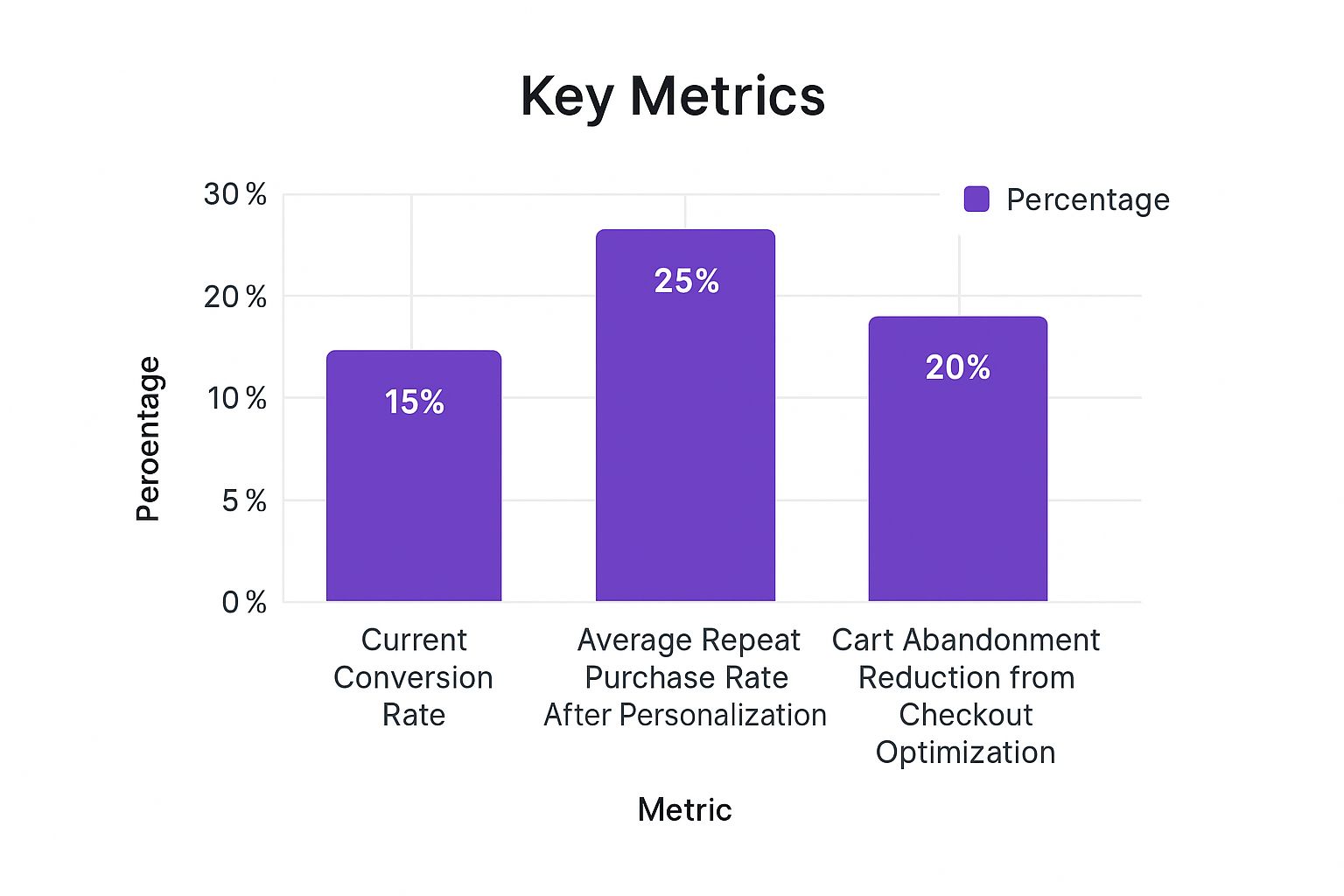
As you can see, focused efforts in areas like personalization and checkout optimization lead directly to major gains in both customer retention and sales conversions. It's all connected.
To help you visualize these foundational areas, here's a quick breakdown of where your focus should be for both immediate and long-term sales improvement.
Core Pillars for Ecommerce Sales Growth
| Strategy Pillar | Primary Goal | Key Action |
|---|---|---|
| User Experience (UX) | Make shopping easy and enjoyable | Simplify navigation; optimize site speed |
| Personalization | Make customers feel understood | Recommend relevant products; use targeted messaging |
| Smart Marketing | Attract and convert the right audience | Run targeted ad campaigns; build an email list |
| Frictionless Checkout | Reduce cart abandonment | Offer multiple payment options; simplify the form |
Focusing on these pillars consistently is what builds a powerful engine for attracting and keeping customers for the long haul.
The Path to Sustainable Growth
At the end of the day, increasing ecommerce sales is about building a system, not just running a one-off campaign. Every improvement you make—from optimizing a product page to personalizing an email—compounds over time. This guide is here to give you actionable steps to strengthen each part of your ecommerce business.
Key Takeaway: Sustainable ecommerce growth comes from a unified strategy that prioritizes the entire customer journey, from first click to repeat purchase. Optimizing your website for conversions is the fastest path to meaningful revenue growth.
By zeroing in on these foundational areas, you create a powerful system for attracting and retaining customers. For a deeper dive into the technical side of things, check out our guide on how to optimize your ecommerce website for peak performance.
Now, let's break down each strategy in detail with practical examples you can start using right away.
Turn Your Website Into a Conversion Machine
Think of your website as your hardest-working salesperson. It never sleeps, never takes a break, and it's your primary point of contact with customers. But is it closing deals? Just getting traffic isn't enough. You need to turn those visitors into actual customers, and that’s where conversion rate optimization (CRO) comes in. It’s all about turning your site into a well-oiled machine that guides shoppers from "just browsing" to "just bought."
The first step is simple but crucial: look at your site through your customer's eyes. Can they find what they want, fast? A confusing or slow website is a guaranteed sales killer. Your goal is to make the entire shopping experience feel effortless.
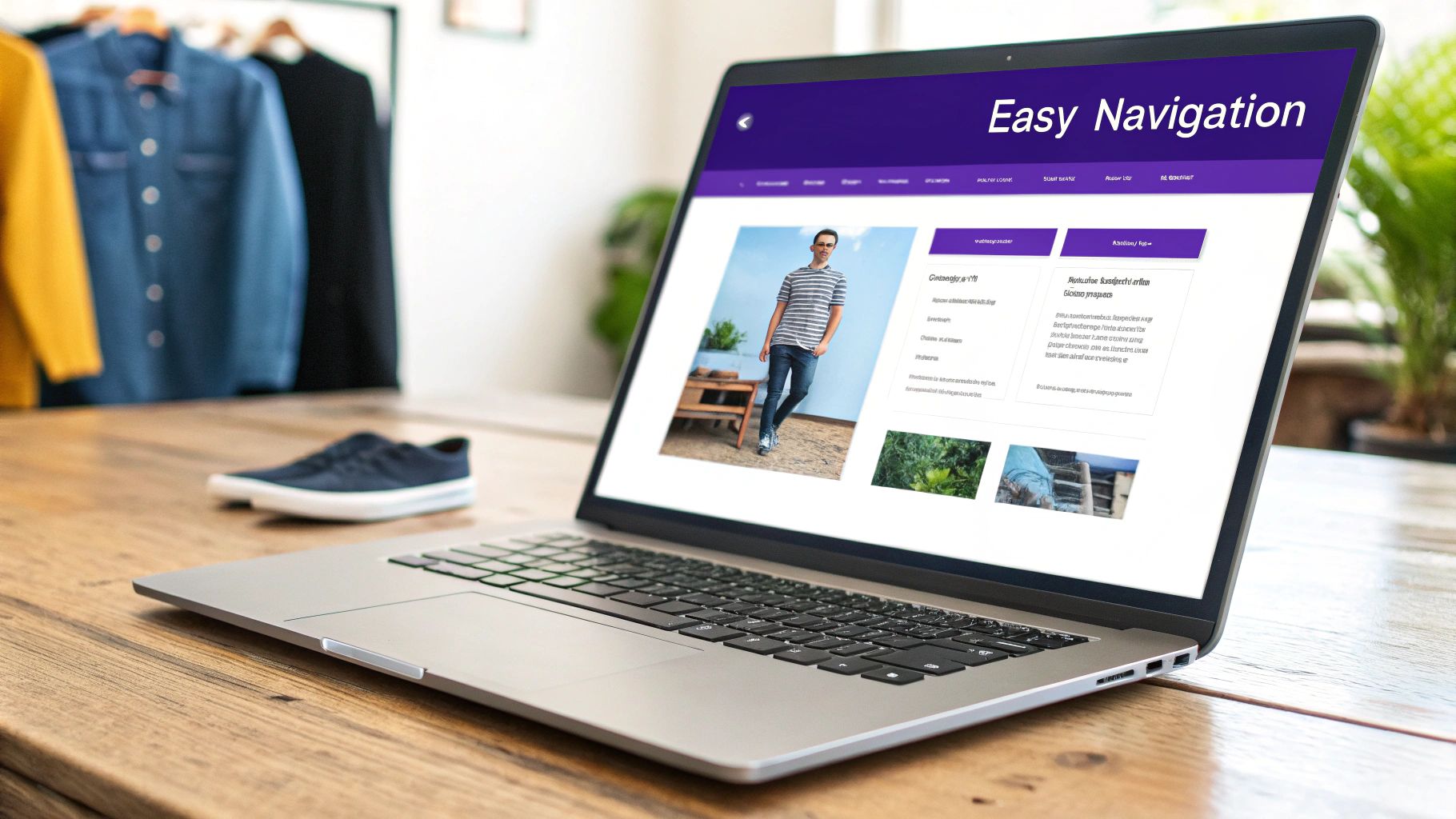
Simplify the Path to Purchase
Online shoppers don't have a lot of patience. If they can’t figure out your site in a few seconds, they'll bounce straight to a competitor. I've always been a fan of the three-click rule: a user should be able to get from your homepage to any product in three clicks or less.
To make that happen, you need a clean, logical navigation structure. Use category names that real people would actually search for. And don't underestimate the power of a great search bar—one with auto-complete can make a huge difference.
And let's talk mobile. With over 60% of online traffic now coming from mobile devices, a mobile-first design isn't just a good idea; it's non-negotiable. Your site has to be fully responsive, with big, easy-to-tap buttons and readable text. Slow load times are a dealbreaker on any device, but they're especially deadly on mobile, so make speed a top priority.
Craft Compelling Product Pages
Your product pages are where the magic happens—or doesn't. This is where the final buying decision is made. These pages need to do more than just list specs; they need to build trust and answer questions before the shopper even thinks to ask them.
Visuals are everything here. High-quality, professional images are an absolute must.
- Multiple Angles: Let them see the product from every side.
- Lifestyle Shots: Help them imagine the product in their own lives.
- Zoom Functionality: Give them the ability to inspect the details up close, just like they would in a physical store.
Your product descriptions are just as vital. Ditch the generic, manufacturer-provided text and write unique copy that connects with your ideal customer. Think about their hesitations. Selling clothes? Include a detailed sizing chart and describe how the fabric feels.
Pro Tip: Break up your text with bullet points that highlight key benefits. This makes your page scannable, helping customers quickly find the info that matters most to them.
Master the Call-to-Action
That "Add to Cart" button might be the single most important element on the page. The right design and wording can have a massive impact on your conversion rates. You want it to stand out and create a little urgency without being obnoxious.
Try experimenting with:
- Color: Use a contrasting color that pops but still fits your brand's style.
- Wording: Test something action-oriented like "Get Yours Now" against a simple "Buy Now."
- Placement: Make sure that CTA is "above the fold" (visible without scrolling) on both desktop and mobile.
The only way to know what really clicks with your audience is to test, test, test. A/B testing is your best friend here. Test your headlines, your CTAs, your images—even your checkout process. It’s the small, data-backed tweaks that lead to big wins over time. To really get this right, focusing on how to improve website conversion rates will turn your website into a true sales engine.
For a more structured game plan, our comprehensive conversion rate optimization checklist will walk you through all the essential steps. It’s all about making smarter, data-driven decisions to turn more browsers into buyers, boosting sales without spending another dime on ads.
Using Personalization to Boost Customer Value
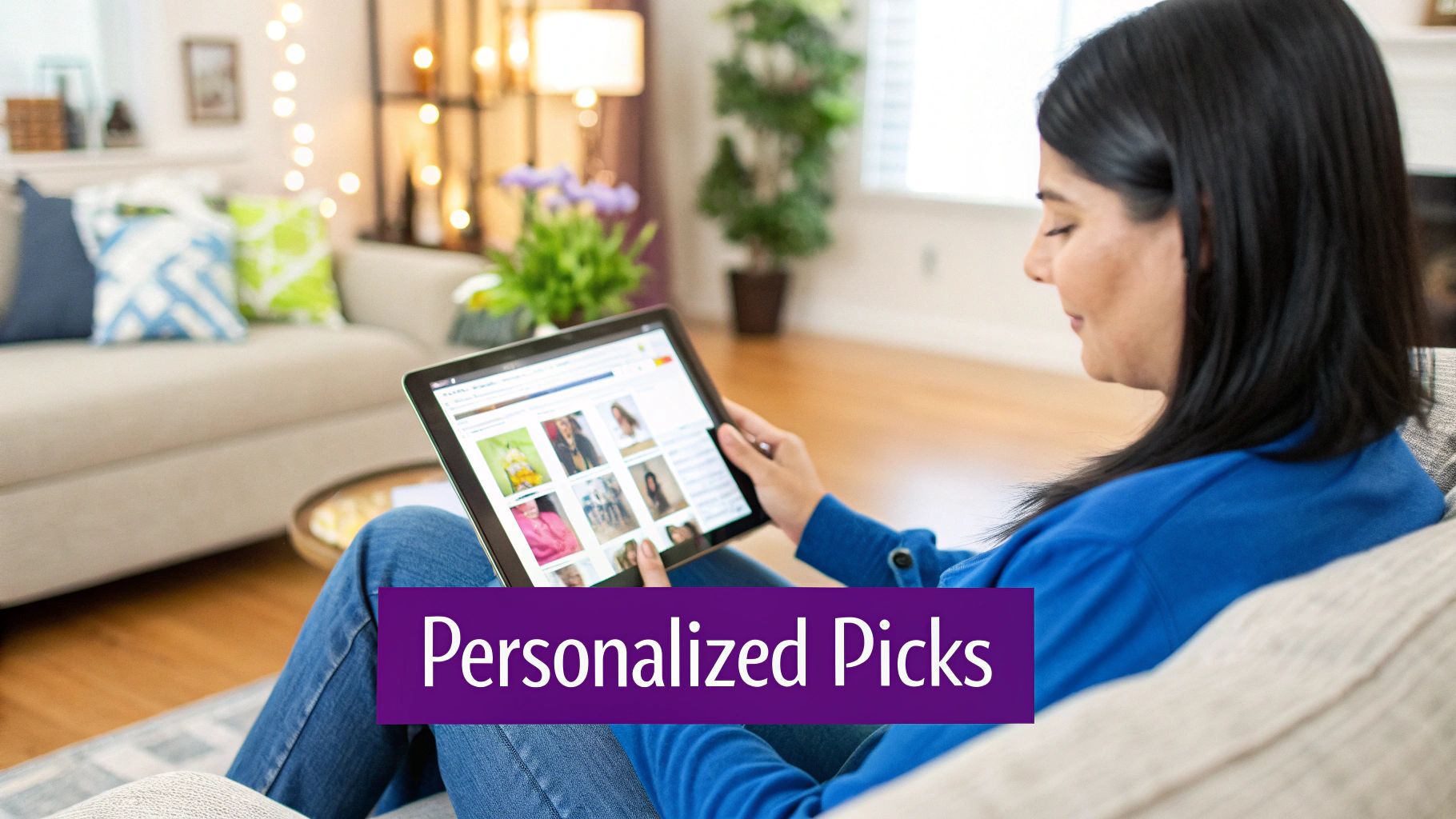
Let's be honest, the days of one-size-fits-all marketing are long gone. Today's shoppers don't just want a personalized experience—they expect it. This shift is hands-down one of the most powerful levers you can pull to drive e-commerce sales and build a loyal customer base that keeps coming back.
We're talking about more than just slotting a customer's first name into an email subject line. True personalization transforms your website from a static product catalog into a dynamic, personal shopping assistant. Every touchpoint should feel relevant and genuinely helpful.
And it really pays off. When customers feel like you "get" them, they're not only more likely to buy, but they also tend to spend more. It’s a foundational strategy for real, sustainable growth.
Dynamic Content and Product Recommendations
One of the quickest wins in personalization is simply showing customers products they actually care about. Instead of making them hunt through your entire catalog, you can guide them right to the good stuff based on what they're already doing on your site.
This is where dynamic product recommendations come in. Think about it: if someone is looking at a pair of running shoes, your site should immediately kick into gear and suggest related products.
- "Frequently Bought Together" sections are perfect for suggesting socks or athletic apparel.
- "You Might Also Like" carousels can show off similar shoe models from different brands.
- "Based on Your Browsing History" widgets are great for reminding them of items they clicked on earlier.
These automated suggestions do more than just showcase your inventory. They make the shopping experience easier and more enjoyable, helping customers discover products they’ll love. The direct result? A higher average order value and more sales.
Personalization isn't just a feature; it's a conversation. It tells your customer, "We know you, we see you, and we have exactly what you're looking for." This builds a level of trust and loyalty that generic marketing simply can't match.
Even when the market fluctuates, businesses that focus on the customer experience are the ones that grow. To give you some perspective, in the second quarter of 2025, U.S. e-commerce sales hit roughly $292.9 billion, making up 15.5% of all retail sales. This shows that even small improvements in personalization can help you capture a bigger piece of a very resilient pie. You can dig into more quarterly online sales trends on DigitalCommerce360.com.
Tailoring Offers with Conditional Logic
Beyond just recommending products, you can personalize the entire user journey with conditional content. This is all about showing different messages, popups, or special offers to different groups of visitors based on rules you define.
This is exactly what tools like Divi Areas Pro are built for. It gives you the power to create hyper-targeted content that only appears based on a user's behavior, location, device, or even their purchase history.
The real magic happens when you start setting display conditions. This is where you can get incredibly specific about who sees your message and when.
This level of control is what makes personalization so powerful. Just imagine what you could do:
- Welcome New Visitors: Set up a popup with a 10% discount that only appears for first-time visitors, giving them a little nudge to make that first purchase.
- Reward Loyal Customers: Create an exclusive offer or early access to a new collection that's only visible to logged-in customers who've bought from you before.
- Reduce Cart Abandonment: Trigger an exit-intent popup with a free shipping offer the moment a user with items in their cart tries to leave your site.
By tailoring the experience like this, every interaction feels more relevant and personal. It's a thoughtful approach that doesn't just increase sales—it builds genuine brand loyalty. For a deeper dive, check out these powerful website personalization strategies you can put into action.
Driving Repeat Sales with Email and Social Media
Getting that first sale is a huge milestone, but the real secret to sustainable growth is turning that one-time buyer into a loyal fan who comes back again and again. This is where the real relationship-building starts, and your most powerful tools for the job are email and social media. After all, it's far cheaper to keep a customer than to find a new one.
When you focus on what happens after the purchase, you dramatically increase your Customer Lifetime Value (CLV). A smart strategy here transforms your brand from just another online store into a community. It makes customers feel connected and gives them a reason to return.
Win Back Lost Sales with Smart Email Automation
Let's be real: not every "Add to Cart" click ends in a sale. In fact, data shows that nearly 70% of online shopping carts are abandoned. But that doesn't mean the sale is lost forever. A well-timed abandoned cart email sequence is your secret weapon for clawing back a huge chunk of that revenue.
With a simple automated series of emails, you can realistically win back 10-15% of those almost-customers. The trick is to be helpful and persuasive, not pushy.
Here’s a proven three-email framework that just works:
- The Gentle Nudge (1 Hour Later): The first email is just a friendly reminder. Maybe they got distracted or their browser crashed. A simple subject line like "Did you forget something?" along with a picture of the items they left behind is often all it takes.
- The Value Reminder (24 Hours Later): Now's the time to remind them why they wanted those items in the first place. Reiterate the benefits, highlight a killer customer review, or point out a unique feature they might have missed.
- The Sweetener (48 Hours Later): If they're still on the fence, a small, time-sensitive incentive can be the final push they need. Think free shipping or a 10% off coupon. It often tips the scales.
Don't sleep on your welcome email series, either. It's just as critical. Data shows that customers who get a welcome series can have a lifetime value that's double that of those who don't. This is your first impression—make it count.
Turn Social Platforms Into Direct Sales Channels
Social media isn't just for posting pretty pictures anymore; it's a direct line to your cash register. Your main goal should be to make it ridiculously easy for someone to go from "ooh, I like that" in their feed to "order confirmed" on your site.
The easiest way to do this? Shoppable posts. Platforms like Instagram and Facebook let you tag products right in your photos and videos. A user taps the tag, sees the price, and can click straight through to your product page. It's a seamless experience that dramatically shortens the path to purchase.
Another powerful move is running hyper-targeted ad campaigns. You can create lookalike audiences based on your existing customer list, which tells the platform to find new people who share similar traits. It's a data-driven way to ensure your ad budget is spent on people who are most likely to convert.
Build Trust with Authentic Social Proof
Here’s a simple truth: people trust other people more than they trust brands. That’s why social proof is one of the most powerful tools you have. It's the digital version of walking past a busy restaurant and thinking, "Wow, that place must be good."
You can actively build social proof on your own channels:
- Encourage User-Generated Content (UGC): Start a branded hashtag or run a contest encouraging customers to share photos with your products. Featuring these authentic shots on your feed is pure gold for building community and trust.
- Showcase Customer Reviews: Don't let those five-star reviews just sit on your product pages! Turn a glowing testimonial into a clean, shareable graphic for your social media. It's instant third-party validation.
- Highlight Real-Time Activity: Ever seen a notification like, "20 people bought this in the last hour"? That's social proof in action. Tools that show how many people are viewing or recently purchased an item create a sense of urgency and popularity, making new buyers feel much more confident in their decision.
Expanding Your Reach to Global Markets
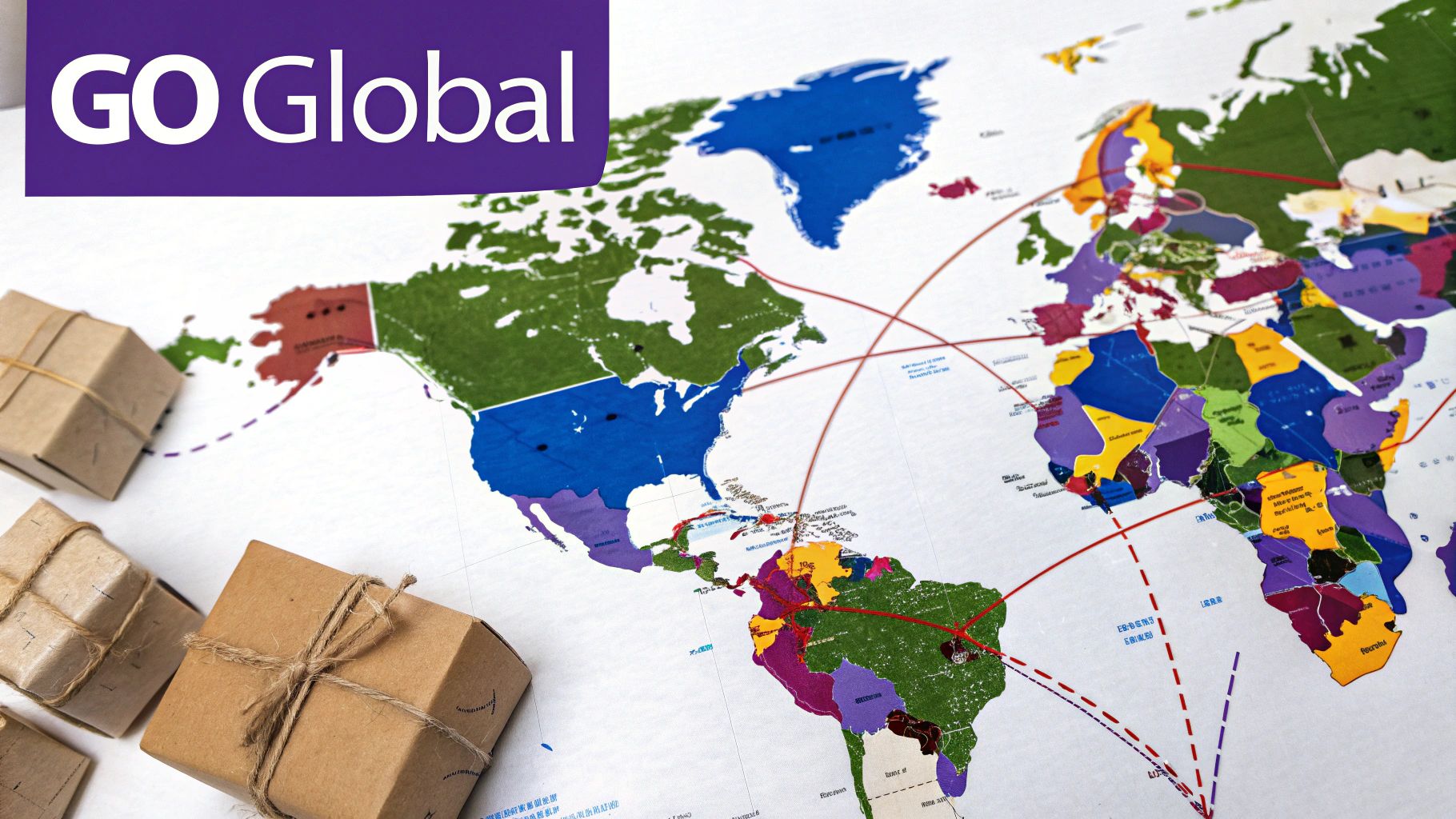
Sooner or later, every growing ecommerce brand hits a ceiling in its home market. The next logical step? Looking beyond your domestic borders. International expansion can feel like a massive leap, but it's where you'll find some of the biggest opportunities for growth. With the right strategy, you can tap into huge new customer bases and seriously boost your sales. The secret is to approach it methodically, starting with the data you already have.
The numbers here are staggering. By 2025, worldwide e-commerce sales are expected to hit an incredible $6.42 trillion, making up over 20% of all retail sales. Just a few key markets—like China, the US, and Western Europe—are projected to contribute more than $5.17 trillion of that total. That's a massive pie, and there's a slice waiting for brands willing to expand. If you want to dig deeper into the data, Shopify has some great insights on global ecommerce trends.
Identify Promising New Markets
Before you even think about translating your homepage, you need to play detective with your analytics. Your data is already telling you where your next big market might be. You just have to know where to look.
Check your website traffic, social media followers, and even your current sales data for patterns. Are you getting a weirdly high number of visitors from Germany? Is your Instagram following suddenly growing in Australia? These aren't accidents; they're clues.
Use this info to pinpoint one or two promising markets to test the waters. Don't try to conquer the world all at once. Start small, validate the demand, and build from there.
Go Beyond Translation to True Localization
This is the part where so many brands stumble. Running your website through Google Translate and calling it a day is a recipe for failure. To succeed internationally, you need true localization—adapting your entire customer experience to fit the culture and expectations of your new audience.
Put yourself in their shoes. A shopper in Japan expects different payment options than a customer in Brazil. Your marketing message might not land the same way in the UK as it does in the US.
Here’s what real localization looks like:
- Payment Methods: You absolutely have to offer popular local payment options. Think iDEAL in the Netherlands or local e-wallets in Southeast Asia. Forgetting this is a huge conversion killer.
- Marketing and Messaging: The ad copy and imagery that works in North America could fall completely flat—or worse, be misinterpreted—in another culture. Tailor your message to feel local and relevant.
- Product Selection: Dig into local trends. You may find that certain products resonate more strongly in one market than another. Adjust your catalog and promotions accordingly.
Localization is about showing your new customers that you see them and respect their culture. It says, "We get you, and we've made an effort to meet you where you are." That's how you build the trust needed to launch successfully.
Streamline International Logistics
Finally, you need a rock-solid plan for the nitty-gritty of global sales: shipping and taxes. If you don't get this right, these complexities can torpedo your profits and create a frustrating experience for your customers.
For most businesses, partnering with a third-party logistics (3PL) provider or a fulfillment service with a global network is the smartest move. These partners can handle the headaches for you—warehousing, picking, packing, and shipping from international fulfillment centers.
This not only gets products to your customers faster but also helps you navigate the bewildering world of customs, duties, and international taxes. A smooth, predictable delivery is the final, critical piece of the puzzle. It’s what turns a one-time international buyer into a loyal global customer.
Common Questions About Increasing Ecommerce Sales
Diving into new strategies to grow your store always brings up a few questions. Let's tackle some of the most common ones we hear from fellow entrepreneurs, with answers that get straight to the point.
What Is the Fastest Way to Increase Ecommerce Sales?
While we'd all love a magic button for instant sales, the quickest win is almost always conversion rate optimization (CRO). Forget chasing more traffic for a minute. The real gold is in converting the visitors you already have.
Start with the lowest-hanging fruit: your checkout process. Seriously, take a hard look at your cart abandonment rate. A clunky, multi-page checkout is a conversion killer.
You can make an immediate difference by:
- Simplifying it into a single, clean page.
- Offering a guest checkout option (don't force account creation!).
- Plastering trust badges and security seals everywhere.
These small tweaks reduce friction and build confidence right when it matters most.
Another rapid-fire tactic is an automated abandoned cart email sequence.
Sending a series of automated emails to shoppers who left items behind can recover a substantial chunk of lost revenue. The best part? It works without you spending another dime on ads.
A simple, friendly reminder an hour after they leave, followed by another email 24 hours later highlighting why the product is great, can work wonders.
How Much Should I Spend on Marketing?
There's no single number that works for everyone—marketing budgets are all over the map depending on your industry, size, and how long you've been in business. But a solid benchmark to start with is allocating 5-15% of your total revenue to marketing. If you're a brand-new store, you'll likely need to aim for the higher end of that range to build that initial buzz.
Instead of getting hung up on a specific dollar amount, it's way more effective to focus on your Return on Ad Spend (ROAS). If you’re putting money into a channel like Google Ads or Facebook campaigns and it’s consistently bringing back a 3x or 4x ROAS, that’s the data telling you exactly where to double down.
Start small. Test a few different channels with a modest budget. Track everything like a hawk in a tool like Google Analytics, and then funnel more cash into the channels that are actually making you money.
Which Ecommerce Metrics Are Most Important for Tracking Sales Growth?
To get a real sense of your store's health, you have to look beyond just the top-line revenue number. A handful of key performance indicators (KPIs) will give you a much clearer picture of what's working and where the opportunities are.
Here are the essentials you should have on your dashboard:
- Conversion Rate: The percentage of visitors who actually buy something. This is the single best measure of how effective your website is at turning browsers into buyers.
- Average Order Value (AOV): The typical amount a customer spends in a single transaction. Pushing this number up with upsells and bundles is a direct path to more revenue.
- Customer Lifetime Value (CLV): A forecast of the total revenue you can expect from a single customer over their entire relationship with your brand. A high CLV is a sign of incredible customer loyalty.
- Cart Abandonment Rate: The percentage of shoppers who add items to their cart but bail before paying. Driving this number down is one of the most direct ways to boost sales.
How Can I Increase Sales Without Offering Discounts?
You absolutely can. In fact, you should! Constantly slashing prices trains customers to wait for sales and eats into your margins. The secret is to shift from price-based incentives to value-added incentives.
Think about perks that make the customer feel like they’re getting an amazing deal, without you having to drop the price.
Free shipping is the king of value-adds. For many shoppers, it’s a more powerful psychological trigger than a small percentage off. Another fantastic strategy is creating product bundles. Grouping related items together for a slightly better price than buying them separately increases your AOV while making the customer's life easier.
Don't forget about loyalty. A good loyalty program that rewards repeat customers with points, early access to new products, or other exclusive perks is a surefire way to keep them coming back.
And finally, never, ever underestimate the power of social proof. Plaster your product pages with customer reviews, detailed testimonials, and user-generated photos. It builds massive trust and gives new shoppers the confidence to click "buy" at full price.
Ready to put these strategies into action? Divimode gives you the tools to build a high-performing, personalized ecommerce store on Divi. With Divi Areas Pro, you can create targeted popups, dynamic offers, and interactive content that turns casual visitors into loyal customers.
Start building a smarter Divi website today at https://divimode.com
